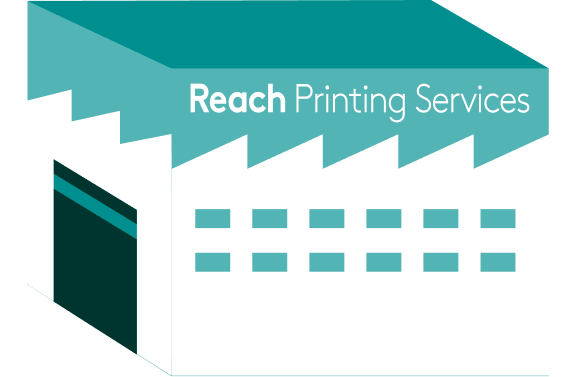There are many types of printing methods. For example, web presses can be either coldset or heatset. Our print sites use the coldset process, which means the ink dries gradually through absorption into the paper and by evaporation, in comparison to heatset, where the ink is dried using heaters or drying lamps (like an oven). Coldset printing is most commonly used on offset or uncoated paper stocks. We offer a range of stocks: improved, super improved and woodfree, alongside our standard newsprints. Heatset presses can give you a bit more versatility when it comes to choosing paper, but this process is not always as cost effective or as fast.
We work within a variety of industries and have customers from many backgrounds. We produce a wide range of formats, including traditional newspapers, coldset magazines, corporate communications, council and government communications, marketing material, insert advertising campaigns, in-store promotional brochures/campaigns, door-to-door campaigns, and many more. We can print from as little as 1000 copies up to millions of copies.
Our fast turnaround and reduced costs make us firm favourites with our clients who come from different sectors. Publishers with breaking news and sports results, or a retailer who wants to check competitor pricing or the weather report before deciding whether to advertise a BBQ or promote a particular TV… having the option to turn around millions of copies within hours is a huge benefit, and with six UK-based print sites and 90 printing units across the group, we can boast extensive facilities.
Coldset printing offers the option to have a print product FAST and at a cost-effective price. Understanding that the paperstock and print process are different to other processes, ensuring that profiles are correct – and taking this into consideration during the planning and design stages – will avoid issues and help maximise the potential of your print product.
Show-through
Show-through occurs when you hold a page up to the light and the image on the reverse page ‘shows through’. This happens in all printing methods; generally, the thicker the grammage, the less show-through will appear. Show-through and set-off are often confused as being the same thing, but are in fact very different. Again, considering show-through at the design stage and during page planning – and therefore avoiding large white spaces whenever possible – can reduce the impact of show-through.
Set-off
Ink from one page can ‘set off’ onto the facing page. This has improved with developments over the years, but considering the issue of set-off during the design stages is still important. Avoid using large white space, which will highlight any set-off. Consider your page layout; if you can’t avoid having white space, then you can at least avoid heavily inked areas on the facing page that could set off onto the white space.
Ink
Reduce ink where possible; for example, use black rather than CMYK. This will help reduce set-off and show-through.
Image Reproduction
We always recommend that you optimise your images for newsprint, by retouching the images, correcting the exposure, colour and cast, and converting to CMYK, ensuring you use the correct icc profile.
Fonts & Typefaces
All fonts must be embedded or embedded subset. Black text should be 100% black – not made up of the four (CMYK) colours – and we recommend a minimum point size, depending on how the text is being used. For example, black text on a white background should be a minimum of 6pt. Sans Serif fonts are the best choice for repro; fonts with thin or delicate strokes (serif fonts) should be avoided. Again, more information is available on our website.
Bleed
Only products that are trimmed can have a bleed.
Colour Repro
Our webpairer proofer replicates how your artwork will reproduce on our paperstocks. Although a good representation, it is not a complete 100% match, however, so we advise checking your artwork on the webpairer to see a very good indication of what you will receive. It is our job to print the pages and match the colour of the PDF files you send us.
We have soft-proofing screens, which show the PDF file you have sent us, and this is what our printers aim to replicate. We also have special lighting, and both our screens and lighting are calibrated every 28 days to ensure the most accurate match is achieved. It is important that you calibrate your screen regularly, to ensure we are looking at the same image as you and your designers. If you have a certain colour you are trying to achieve, speak to the prepress team prior to the live print run.
We can send various samples so that you can look at design, colour, images and see what works and what doesn’t. We have a very experienced pre-press team, who can offer support and guide you through the pre-press process. Visiting our print site will give you the greatest insight into what can be achieved.
The coldset print process can offer a quality print product when design is considered during the planning stages. It can be turned around very quickly and is cost-effective and, if you have never looked into the opportunities that coldset printing offers, we would advise you to get in touch with us, and come and take a look around one of our print sites.

